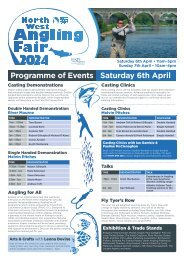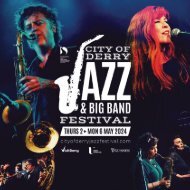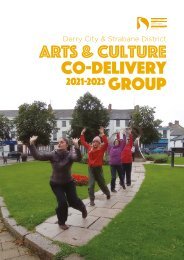Derry & Strabane: Natural Capital Report of Outdoor Recreation Spaces 2021
An analysis of the true social, health, economic and environmental value of green and blue spaces in our District using Natural Capital Accounting.
An analysis of the true social, health, economic and environmental value of green and blue spaces in our District using Natural Capital Accounting.
Create successful ePaper yourself
Turn your PDF publications into a flip-book with our unique Google optimized e-Paper software.
The benefits <strong>of</strong> public greenspaces to Northern Ireland<br />
1<br />
Greenspaces are valuable economic infrastructure,<br />
delivering benefits to individuals, to communities<br />
and to public services. Greenspaces <strong>of</strong>fer<br />
opportunities for outdoor recreation, socialisation<br />
and physical activity. In addition, greenspaces can<br />
serve a wider social purpose, supporting social<br />
cohesion and forming part <strong>of</strong> community identity.<br />
They can also play a role in the local economy,<br />
hosting revenue generating services.<br />
The COVID-19 pandemic has highlighted the<br />
importance <strong>of</strong> publicly-accessible greenspaces for<br />
health. For most UK residents, outdoor recreation<br />
became the only option for exercise during<br />
lockdown periods. Studies found that during<br />
the first lockdown in April 2020, UK park visits<br />
increased by 150% compared to 2019 (Dehui et al.,<br />
<strong>2021</strong>) In Northern Ireland (NI) several business,<br />
community and environmental groups urged the<br />
government to consider the importance <strong>of</strong> green<br />
spaces for cycling and walking in NI’s coronavirus<br />
recovery plan (Macauley, 2020).<br />
The benefits <strong>of</strong> public spaces<br />
can be disaggregated into three<br />
categories: health and social<br />
benefits, environmental benefits<br />
and economic benefits.<br />
Health, wellbeing and social cohesion<br />
benefits<br />
Making regular visits to greenspaces has been<br />
shown to improve mental wellbeing, physical<br />
health and overall life satisfaction. Parks <strong>of</strong>fer<br />
opportunities for exercise, which can have a<br />
positive impact on physical health and reduce<br />
the risks <strong>of</strong> diseases associated with inactivity,<br />
such as ischaemic heart disease and stroke (Kyu<br />
et al., 2016). Furthermore, research has shown that<br />
spending more time in greenspaces has a positive<br />
impact on mental wellbeing and life satisfaction,<br />
particularly for urban dwellers (White et al., 2019).<br />
Improved health can increase productivity,<br />
benefitting both workers and firms. The reduced<br />
disease burden can benefit the public sector by<br />
reducing pressures on public health services.<br />
While greenspaces cannot replace health care<br />
services, research by <strong>Natural</strong> England suggests<br />
that using greenspaces as part <strong>of</strong> mental health<br />
treatment programmes can deliver significant<br />
value for money, up to £2 billion in savings for the<br />
NHS (Department for Environment Food and Rural<br />
Affairs, 2020).<br />
Greenspaces play an important role in fostering<br />
social cohesion within communities. For many<br />
urban residents, greenspaces symbolise belonging<br />
to a community and may have important<br />
historical value (Bryan, 2015). In addition, urban<br />
green spaces have been found to promote positive<br />
social interactions through physical or other types<br />
<strong>of</strong> activities that cultivate social engagement<br />
(Jennings and Bamkole, 2019).<br />
9

















